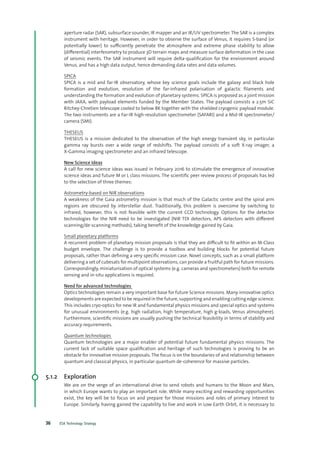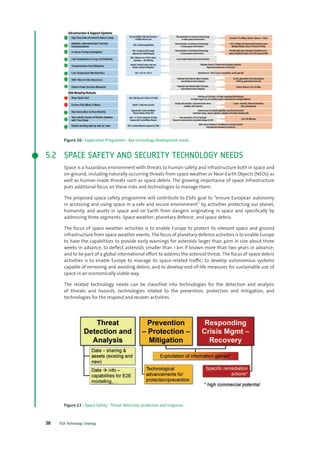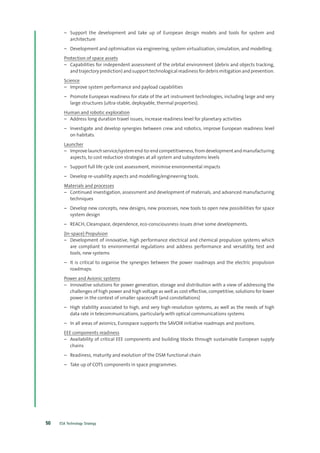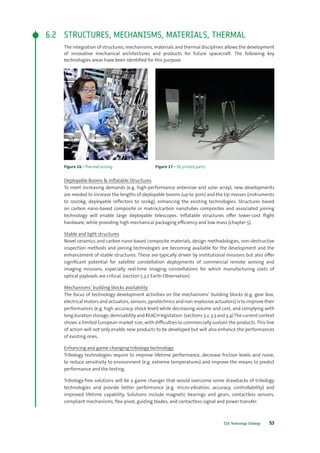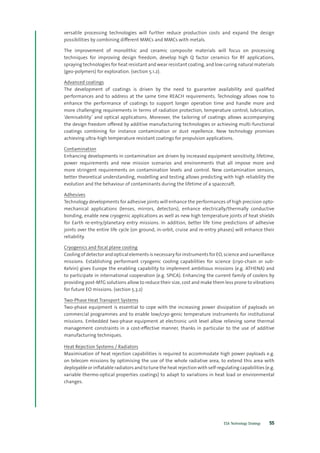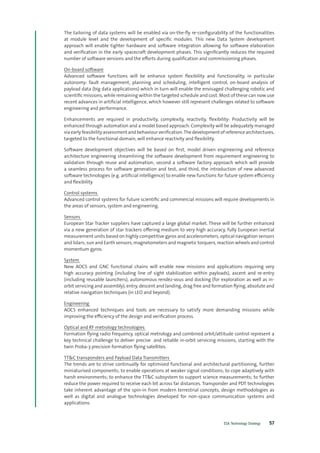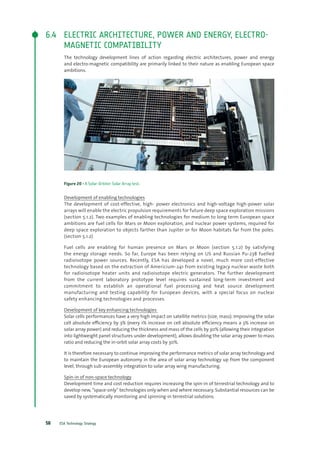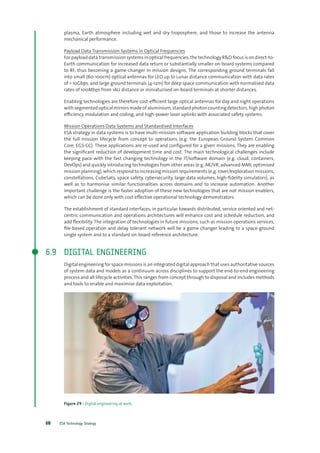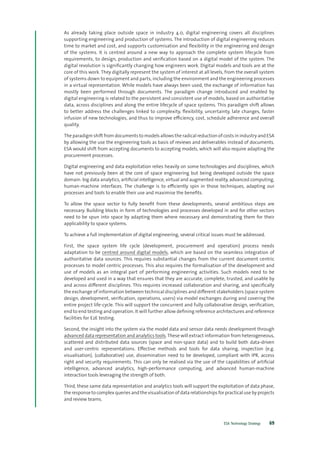The document outlines ESA's Technology Strategy 1.1, established in November 2019, focusing on guiding technology development to enhance competitiveness in the evolving space sector. Key objectives include a 30% improvement in spacecraft development time by 2023, cost efficiency enhancements, and embracing digital engineering for faster adoption of innovative technologies. The strategy highlights the importance of aligning with changing market dynamics, investing in R&D, and managing the impact of emerging trends like big data, digitalization, and cybersecurity.
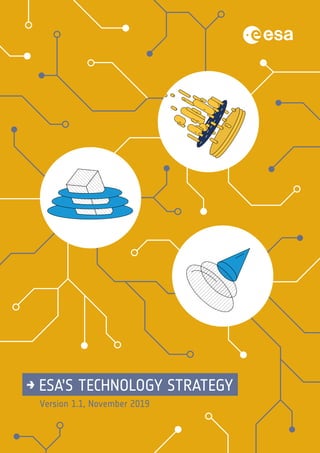













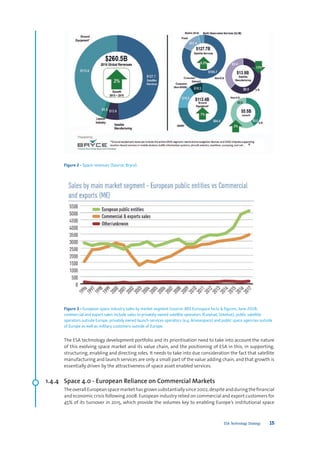
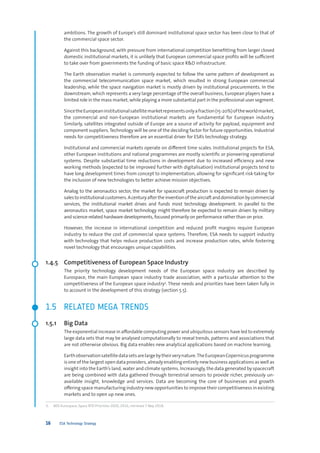









![ESA Technology Strategy26
• allow transformational science and increasing the science performance to cost ratio by one order
of magnitude.
To achieve this goal, ESA will leverage downstream commercial technological developments, the use
of modular architectures for space systems, adapted standardisation, advanced manufacturing and
lightweight structures, low cost propulsion concepts, and the smart use of commercial off-the-shelf
devices and components is envisaged.
Specialattentionwillbegivento,bigdataanalyticstechnologies,end-to-endsystemdesignoptimisation,
on-board intelligence for smart processing to increase the value per pixel, miniaturization of instrument
technologies and payloads, and technology advancements in the domain of optics and sensors.
3.3 30% FASTER DEVELOPMENT AND
ADOPTION OF INNOVATIVE
TECHNOLOGY
We develop processes, methods and technologies to
allow Europe to take faster the full benefit from the early
introduction of new technologies into space systems
enabling new applications.
Specifically, ESA will
• Double the number of new space system technologies
demonstrated at TRL [8/9] per year by 2021 and quadruple
this number by 2024.
• Reduce the time from TRL 4/5 to TRL 7/8 by 50% for technologies
selected for in-orbit demonstration.
• Double the use of COTS in ESA spacecraft by 2021 via a dedicated COTS strategy.
To achieve this goal, ESA will focus on technologies that enable new space-based capabilities and
services, and offer fast and systematic qualification and in-orbit demonstration opportunities.
Key technologies currently identified in chapter seven include quantum technologies, on-board
artificial intelligence algorithms, advanced optics and detector technologies, in-orbit robotics, in-
orbit manufacturing and assembly technologies, cybersecurity-related technologies as well as
technology developments needed for COTS applications in space systems. ESA will develop, mature
and qualify these technologies in close partnership with industry and research centres, investing in
joint lab facilities for faster spin-in from terrestrial sectors into space. ESA will introduce a significantly
increased number of opportunities for technology demonstration and verification payloads (IOD/
IOV), aiming at systematically adding to all ESA spacecraft launch opportunities for piggy-back cube/
smallsats.
3.4 INVERTING EUROPE’S
CONTRIBUTION TO SPACE DEBRIS
BY 2030
We develop the technologies that allow us to leave the
space environment to the next generation in a better
state.
Specifically, ESA will
• Ensure that all ESA missions will be environmentally
neutral by 2020, thus not producing debris larger than
1mm in orbit.](https://image.slidesharecdn.com/esatechnologystrategyversion10-191126233012/85/Esa-technology-strategy_version_1_0-26-320.jpg)









